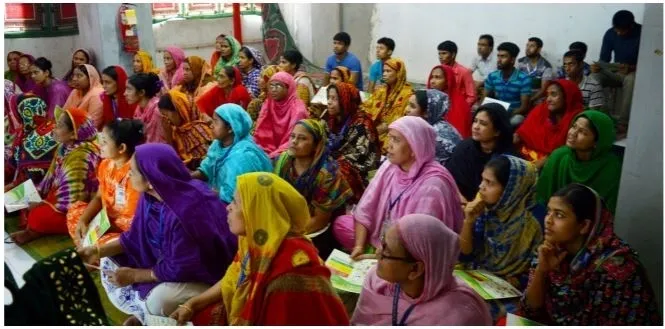Although low-income workers account for almost 42% proportion of the Bangladeshi workforce, a staggering number struggle to make their incomes stretch until the next payday. For instance, a recent survey of a large, nationally representative factory conducted by the International Growth Centre at the London School of Economics found that 18% of workers regularly have to cut meals at the end of the month, and 50% report that they have to borrow money at least once per month to meet their living expenses. Such situations are excarberated with the Covid-19 pandemic as it resulted in job losses with the remaining ones taking significant pay-cuts to stay employed. According to Bangladesh Institute of Development Studies, poverty in urban areas post-lockdown has increased by 27.52%.
More people are taking pay-cuts, pushed to an economically precarious state, and are increasingly reliant on loans to make ends meet. This is particularly relevant for the community of the ‘salaried poor’ — low-wage workers in Ready Made Garments, textile mils, leather production, agro and other manufacting segments who lacks enough access to formal financial instutions and are bound to borrow money from informal moneylenders or shopkeepers when they find themselves strapped for cash.
Many of these informal lenders are ‘loan sharks’ who provide credit at extremely high interest rates- almost as high as 55%. On the other hand, formal microfinance institutions (MFIs) as well as Non-Government Organisations in Bangladesh — which generally provide credits at 27% (as capped by the Microfinance Regulations Act 2010) predominantly provide loans to the entrepreneurial poor- small business owners, farmers, shop-owners and so on. This entails significant barriers to borrowing very small sums of money for personal use on short notice, for instance. Formal finance, then, clearly doesn’t account for the legions of factory workers in Bangladesh who are rather in need of small affordable loans to tide them over until the next payday.
Indeed, lack of access to appropriate and affordable financial products for low-income workers is a pressing problem in terms of the country’s sustainable development goals, particularly poverty eradication, insofar that borrowing on the informal market often ends up being a cause for poverty, as opposed to a cure. That is, due by large to a lack of financial education, many workers pushed out of the formal market often take up high-interest loans without thinking of — or even understanding — most commonly, the compound interest rates in case delayed payments . Further still, many borrowers take loans from several sources, making their repayments all the more difficult to keep track of, and there is often little understanding that it might even take decades to repay their loan. Many also borrow simply to repay earlier loans, and essentially become overwhelmed by debt, and as such, the current state of lending in the country is essentially locking many low-income workers in a cycle of poverty.
Indeed, horror stories surrounding microfinance are so commonplace in Bangladesh and elsewhere in the developing world that a negative consensus has built up around the use of microfinance as a poverty eradication practice within progressive international development circles. But all this begs the question — can microfinance be revolutionized in such a way so as to actually empower low-income workers?


Leave a Reply